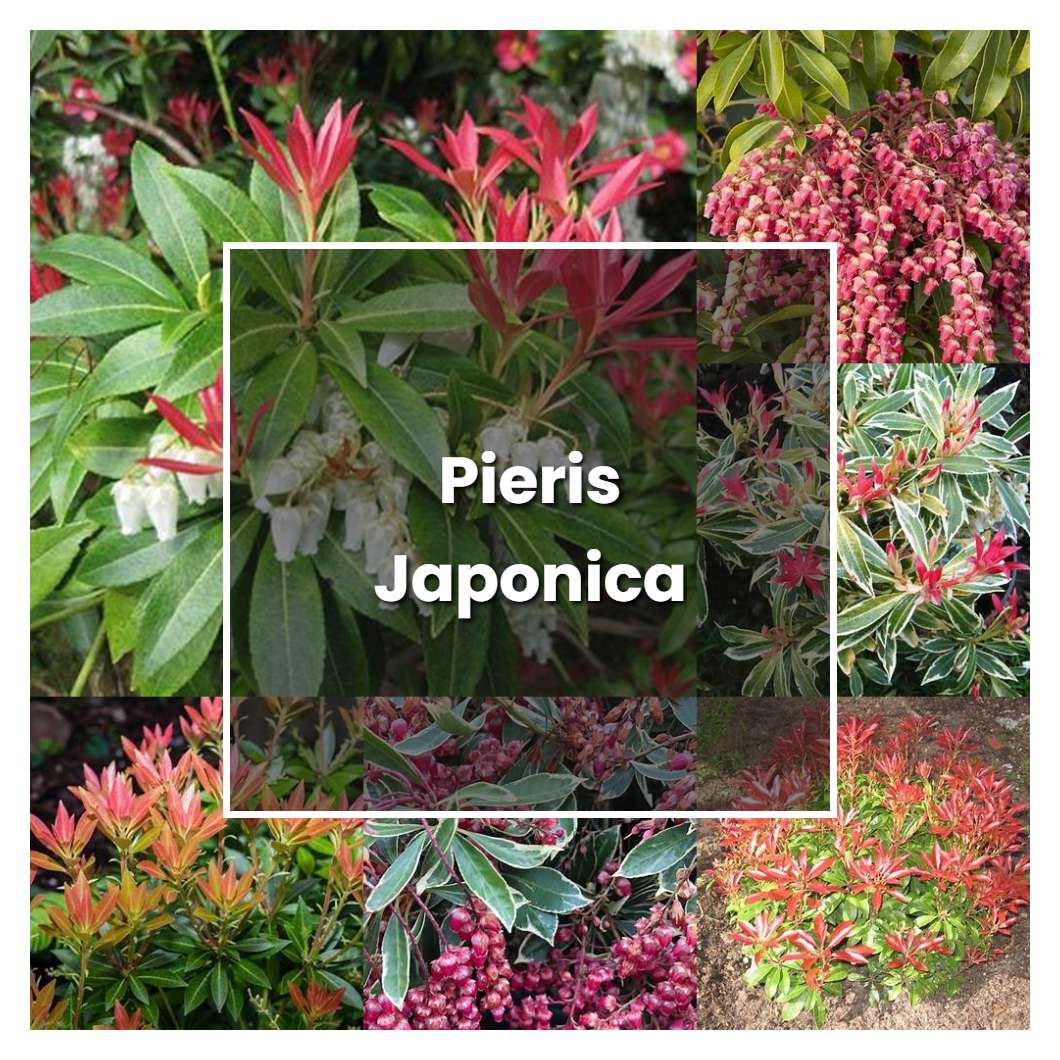Pieris japonica is an ornamental plant that is native to Japan. It is a member of the Ericaceae family and is also known as the lily-of-the-valley shrub. This plant has glossy, dark green leaves and produces clusters of white, bell-shaped flowers in the spring.

Related plant:
Pieris Japonica Forest Flame
Related plant:
Pieris
About soil condition, pieris japonica prefer humus-rich, well-drained soils, and they will not tolerate wet feet. They also require an acidic soil in order to thrive. So, if your soil is not naturally acidic, you'll need to amend it with sulfur or another acidic substance.
Similar to other members of the Pieridae family, the Pieris japonica requires a lot of sun. It grows best in locations that offer full sun to partial sun throughout the day. However, it can also tolerate partial shade, especially during the hottest hours of the day. It's important to make sure that the plant gets enough sun because otherwise, it will become leggy and produce fewer flowers.
The temperature condition for Pieris japonica is that it prefers cool to cold weather and does not do well in hot weather. It is a hardy plant that can tolerate some frost. It can be found in areas that range from full sun to partial shade.
Ideal humidity condition for this plant is between 40 to 60%. If the humidity level drops below 40%, the leaves will begin to turn brown and Crisp. If the humidity level rises above 60%, the leaves will begin to turn yellow and drop off.
Mentioning fertilizer, this family of plant is known to be highly adaptable to different types of soil, however they prefer soil that is high in organic matter with a slightly acidic pH between 5.0-6.5. They also like moist, well-drained soil. It is suggested to fertilize your plant every two weeks using a water-soluble fertilizer. Be sure to follow the package instructions for rate of application. Water your plant when the soil feels dry to the touch, making sure to not let the plant sit in water. Japanese pieris will tolerate some shade, however, too much shade will result in fewer flowers.
Pruning is an important aspect of plant care for the pieris japonica plant. This plant requires pruning in early spring in order to encourage new growth and to shape the plant. Pruning should be done carefully, as the pieris japonica plant is susceptible to damage.
Propagation of the japonica pieris is best done through softwood cuttings taken in late spring or early summer. The cuttings should be taken from new growth that is not yet woody, and they should be about 6 inches long. Cut the bottom of the stem at an angle, and remove any leaves from the bottom half of the stem. Place the cutting in a pot of moistened potting mix, and keep it in a warm place with indirect sunlight until new growth appears.
Usually, the plant growth rate during the spring and summer months, with a rest period in the fall. The average growth rate is about 6 inches (15 cm) per season. However, in the right conditions, some plants may double their growth rate. The best time to transplant pieris japonica is early spring.
Common problems for this kind of plant are aphids, scale and Japanese beetles. Aphids are small, soft-bodied insects that can be green, black, brown or pink. They suck on plant sap, which can cause the plant to become stunted or distorted. Scale are small, hard-bodied insects that can be white, brown, gray or black. They suck on plant sap, which can cause the plant to become discolored or to have sticky spots on the leaves. Japanese beetles are small, dark-colored beetles that eat the leaves of plants.
Source:
Pieris japonica - plantfacts.osu.edu
Pieris japonica | Landscape Plant Propagation Information | Plant ...
Japanese Pieris (Pieris japonica) - Selecting Shrubs for Your
